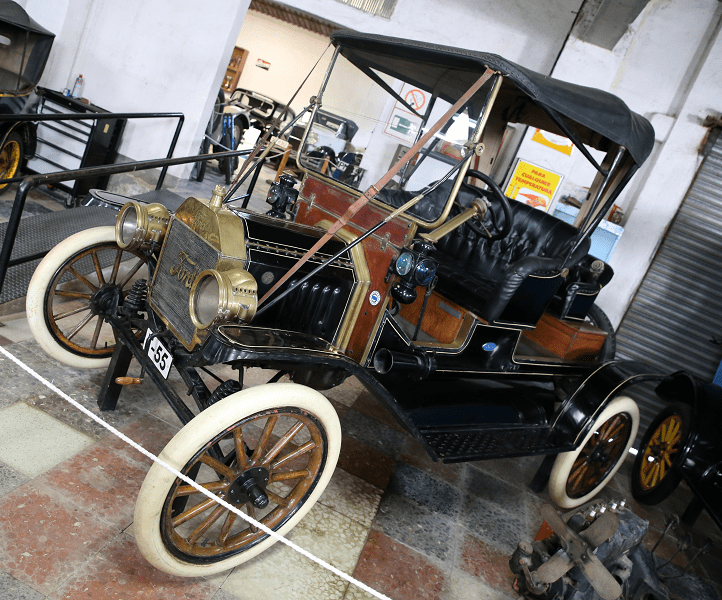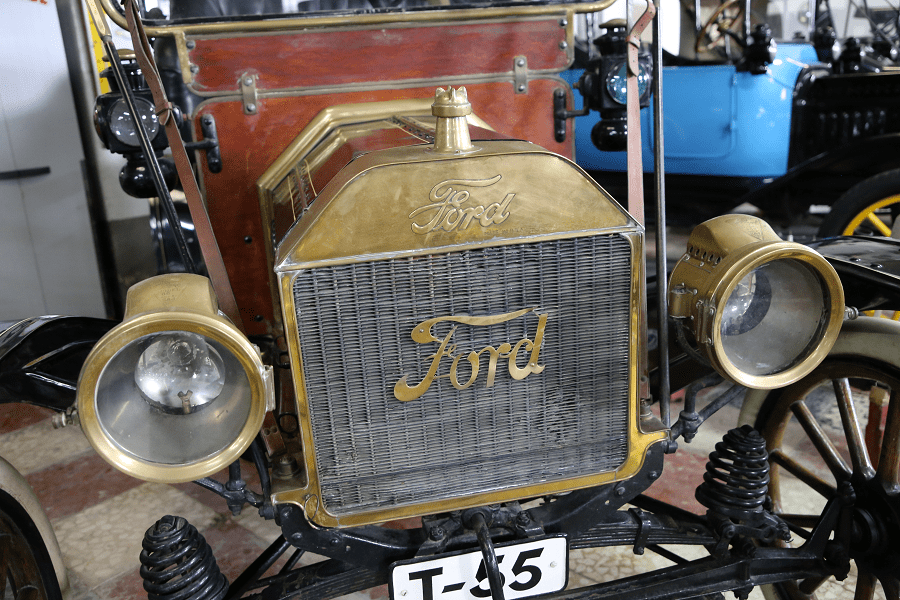Ford Model T Commercial from 1912. This exhibit comes from The Salvador Claret Automobile Collection
The Ford Model T is an automobile that was produced by the Ford Motor Company from October 1, 1908, to May 26, 1927. It is generally regarded as the first affordable automobile, which made car travel available to middle-class Americans. The relatively low price was partly the result of Ford’s efficient fabrication, including assembly line production instead of individual handcrafting. It was mainly designed by an American (Childe Harold Wills) and two Hungarian engineers (Joseph A. Galamb, Eugene Farkas). The Model T was colloquially known as the “Tin Lizzie”, “Leaping Lena” or “flivver”.
The Model T has a front-mounted 177-cubic-inch (2.9 L) inline four-cylinder engine, producing 20 hp (15 kW), for a top speed of 42 mph (68 km/h).
According to Ford Motor Company, the Model T had fuel economy on the order of 13–21 mpg‑US (16–25 mpg‑imp; 18–11 L/100 km).
The engine was capable of running on gasoline, kerosene, or ethanol, although the decreasing cost of gasoline and the later introduction of Prohibition made ethanol an impractical fuel for most users. The engines of the first 2,447 units were cooled with water pumps; the engines of unit 2,448 and onward, with a few exceptions prior to around unit 2,500, were cooled by thermosiphon action.














